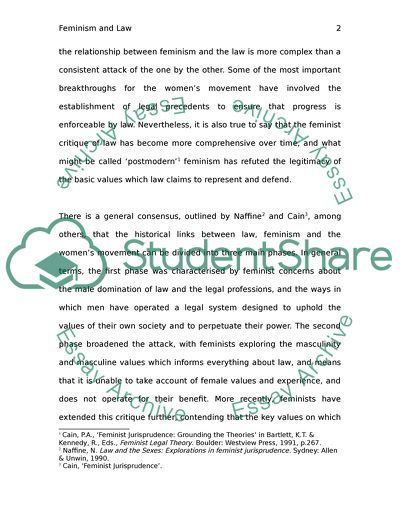Cite this document
(The Historical Importance of Law to Feminism and the Women Movement Assignment, n.d.)
The Historical Importance of Law to Feminism and the Women Movement Assignment. Retrieved from https://studentshare.org/social-science/1748828-the-historical-importance-of-law-to-feminism-and-the-womens-movement-cannot-be-under-estimated-discuss
The Historical Importance of Law to Feminism and the Women Movement Assignment. Retrieved from https://studentshare.org/social-science/1748828-the-historical-importance-of-law-to-feminism-and-the-womens-movement-cannot-be-under-estimated-discuss
(The Historical Importance of Law to Feminism and the Women Movement Assignment)
The Historical Importance of Law to Feminism and the Women Movement Assignment. https://studentshare.org/social-science/1748828-the-historical-importance-of-law-to-feminism-and-the-womens-movement-cannot-be-under-estimated-discuss.
The Historical Importance of Law to Feminism and the Women Movement Assignment. https://studentshare.org/social-science/1748828-the-historical-importance-of-law-to-feminism-and-the-womens-movement-cannot-be-under-estimated-discuss.
“The Historical Importance of Law to Feminism and the Women Movement Assignment”, n.d. https://studentshare.org/social-science/1748828-the-historical-importance-of-law-to-feminism-and-the-womens-movement-cannot-be-under-estimated-discuss.


